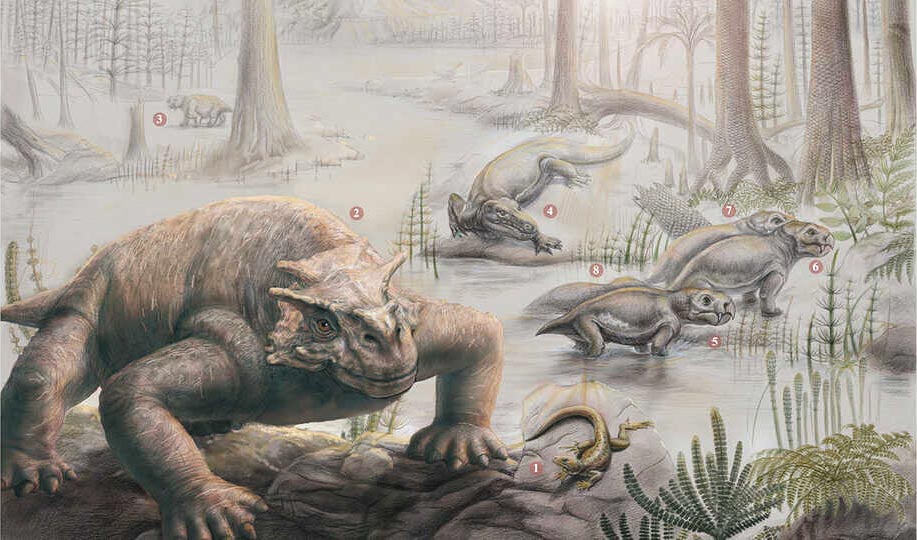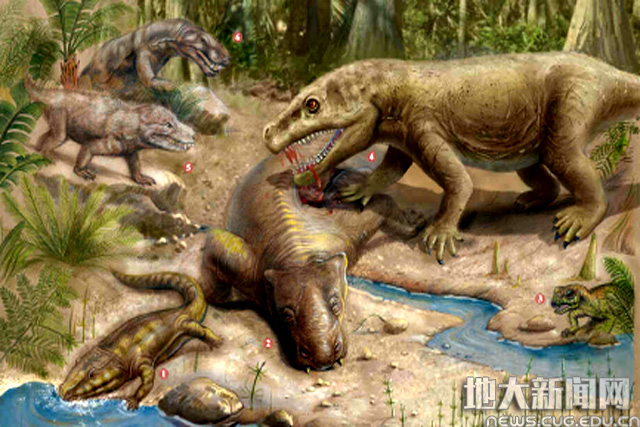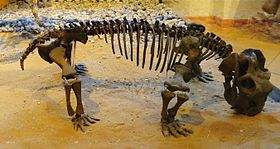A new study, published in the Proceedings of the Royal Society B, shows how anomodonts – ancient relatives of modern mammals – recovered in the aftermath of Earth’s most severe mass extinction, about 252 million years ago, when about 90 per cent of marine organisms and 70 per cent of terrestrial species became extinct.

The pig-size Permian anomodont Dicynodon lacerticeps (Marlene Donnelly / Field Museum of Natural History).
“The number of anomodont species increased during the Permian, sharply dropped during the end-Permian extinction event, and then rebounded in the Middle Triassic Period before the final extinction of the group at the end of the Triassic,” said study lead author Dr Marcello Ruta of the University of Lincoln.

“However, the variety of different anatomical features found in anomodonts – that is, their anatomical diversity – declined steadily over their history.”
“Even in the aftermath of the mass extinction, when there should have been a lot of empty ecological space, anomodonts did not evolve any fundamentally new features. Rather than allowing them to move to a new evolutionary trajectory, the genetic bottleneck they passed through constrained their future evolution.”

The response of animals and plants to the end-Permian mass extinction helps researchers understand models of diversification and patterns of ecosystem reconstruction following large-scale biological crises.
“This is the first study of its kind to address simultaneously changes in species number and anatomical diversity in anomodonts, and to quantify their response to the most catastrophic extinction on record. Anomodonts are abundant, diverse, and well-studied, which makes them ideal models for evolutionary analyses,” explained study senior author Prof Michael Benton from the University of Bristol.

“The results underscore that recoveries from mass extinctions can be unpredictable, a finding that has important implications for the species extinctions being caused by human activity in the world today. We cannot just assume that life will return to the way it was before the disturbances.”
Source: sci.news









